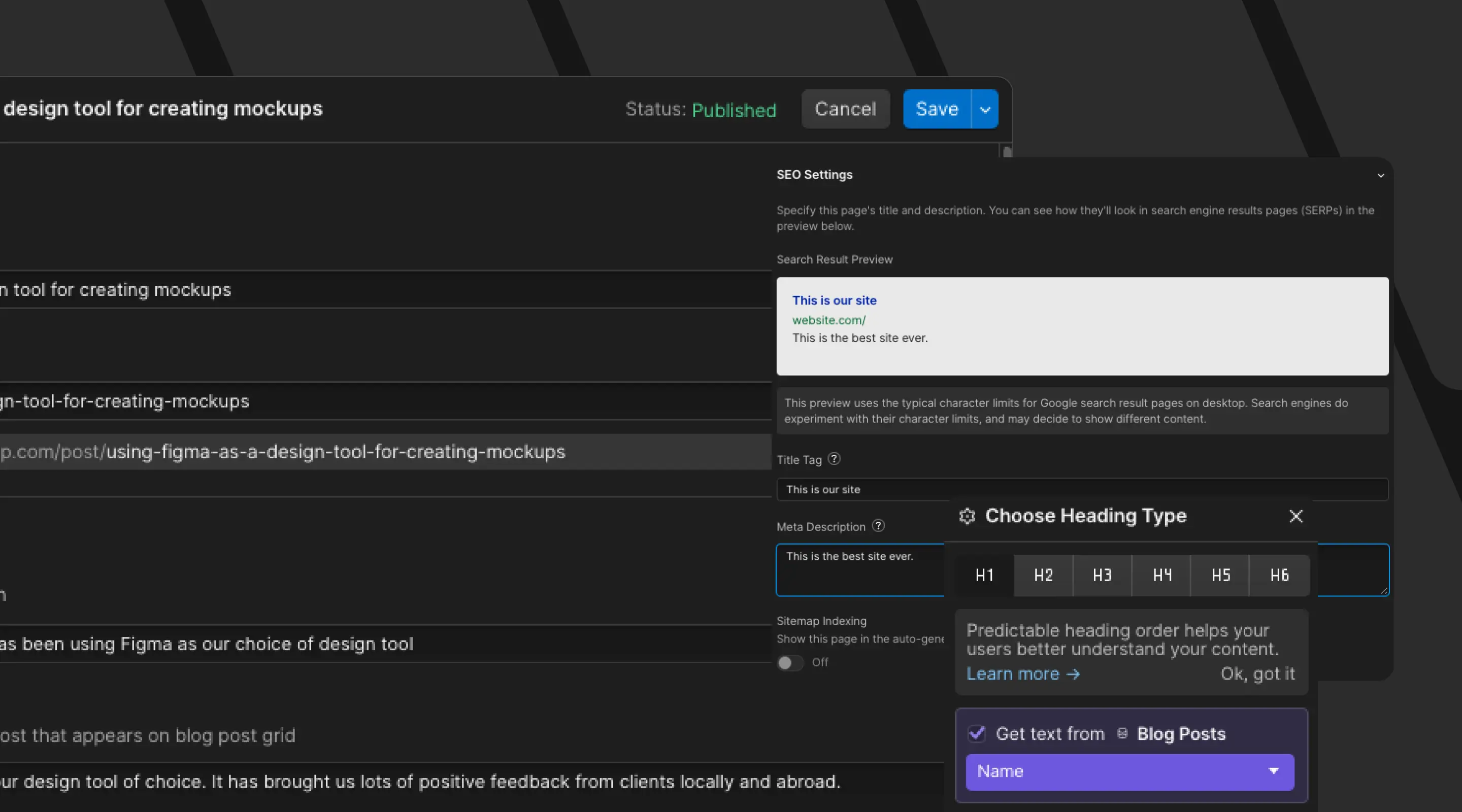5 Reasons Why Companies Are Moving to Webflow
Webflow has been gaining popularity amongst designers and companies over the last few years since it first launched in late 2012. Discover why companies are moving over to Webflow.

What’s Driving the Webflow Wave in Singapore?
At ALF Design Group, we’ve helped dozens of Singapore companies migrate from WordPress, Wix, and Squarespace to Webflow — and their reasons are crystal clear: slower updates, plugin chaos, and limited control.
Let’s explore why Webflow is now the top choice for Singapore’s digital-first businesses.
What is Webflow and Why Is It Popular in Singapore?
Webflow is a visual no-code platform that lets designers and marketers build professional websites without coding. In Singapore, it’s loved for its speed, scalability, and flexibility — helping SMEs stay competitive without needing large development teams.
Launched in 2012, Webflow combines design, CMS, and hosting in one place — a perfect fit for Singapore businesses that value efficiency and clarity in their digital presence.

1. How Does Webflow Offer Better Design Flexibility?
Unlike WordPress themes that depend on plugins and developers, Webflow offers complete visual control — from layout to animation to micro-interactions. You see what you build in real time, ensuring the final site matches your brand vision exactly.
Many design agencies in Singapore now use Webflow to deliver custom, brand-specific designs faster for clients in sectors like fintech and education.

2. How Does Webflow Empower Marketing Teams?
Webflow’s Editor Mode lets marketers and content teams edit text and images without touching code. Updates go live instantly, saving time and developer costs — perfect for fast-moving Singapore SMEs running campaigns across multiple channels.
No more waiting for developers to fix a typo or swap a banner. Your team has the control they deserve.
3. Why Is Webflow’s CMS Perfect for Singapore Businesses?
Webflow CMS is built for non-technical users. It lets you manage blogs, portfolios, and product collections without digging through code. You can add content in minutes, not hours.
4. Say Goodbye to Plugin Nightmares
Here's what we kept hearing from clients:
- "My website broke because of a plugin update."
- "We spent hundreds monthly on third-party plugins."
- "The site is slow and we don't know why."
Are all these familiar to you?
Related Article: Webflow Vs Wordpress
How Webflow removes all that hassle:
- No plugins required for security, forms, or even SEO
- No dependency on external updates
- Fewer moving parts = fewer changes of something breaking
Automatic SSL, backups and security updates are included when you sign up with Webflow.
5. Is Webflow Hosting Really Faster and More Secure?
Webflow is powered by Amazon Web Services (AWS) and Cloudflare, delivering global-scale performance and enterprise-level security.
Key hosting features:
- SSL certification by default
- Built-in site backups
- Lightning-fast global load times
Local brands report load times cut by over 40%, helping them retain visitors and boost SEO rankings instantly.
6. Can Webflow Scale With My Business as It Grows?
As your business grows, your website should too without requiring a complete overhaul.
Webflow supports scalability by offering
- Customisable CMS structures
- Clean and semantic code for SEO
- Performance optimisation built into the platform
There is no need to re-platform when you scale. Webflow grows with you.

Still Skeptical About Webflow? So Were We (in 2013).
Even we were hesitant at first, coming from a background of designing for Wordpress. But once we tested Webflow on a live client project, the results spoke for themselves.
Faster builds. Happier clients. Better design control.
We haven't looked back since.
{{upgrade-website="/directory"}}
Common Pain Points Solved By Webflow
Common Questions About Webflow
Is Webflow better than WordPress for SEO?
Yes — Webflow’s clean, semantic code, lightning-fast hosting, and built-in SEO controls make it highly search-friendly. You can easily manage meta tags, alt text, structured data, and automatic sitemaps — without relying on plugins.
Can I migrate my existing WordPress or Wix site to Webflow?
Absolutely. At ALF Design Group, we’ve helped businesses migrate their sites from WordPress, Wix, and Squarespace to Webflow while preserving design integrity, SEO rankings, and URL structures. The transition process is smooth, strategic, and risk-free.
Do I still need a developer if I use Webflow?
Not for daily edits or content updates. Webflow empowers marketing teams to make changes instantly using the Editor Mode. However, for complex custom integrations or CMS logic, having a Webflow Expert or UX agency (like ALF Design Group) ensures everything runs seamlessly.
How secure is Webflow compared to traditional hosting?
Webflow hosting runs on Amazon Web Services (AWS) and Fastly CDN, offering enterprise-grade security with automatic SSL, daily backups, and DDoS protection. There’s no need to manually update plugins or monitor server vulnerabilities — everything is managed automatically.
Is Webflow suitable for large or enterprise websites?
Yes. Many enterprise brands use Webflow for its scalability and performance. The CMS can handle thousands of dynamic pages, supports multi-user roles, and integrates smoothly with marketing tools like HubSpot, Google Analytics, and CRM systems — all without slowing down your site.
Conclusion: Is Webflow Right For You?
If you’re a Singapore business owner tired of slow updates, broken plugins, and stale designs — it’s time to switch to Webflow.
You’ll get speed, security, and total control over your digital presence.
At ALF Design Group, we specialise in helping brands like BigFundr and other local SMEs migrate to Webflow — from UX strategy to CMS migration to SEO optimisation.
Contact us today to build a faster, safer, and smarter website for your business.
{{build-better-experience="/directory"}}
Related Articles

Voice Search Optimisation: Preparing Your Website for AI Queries
Voice search and AI queries are reshaping how people discover websites. Learn how to optimise your site for conversational intent, structured data, and natural language.

Landing Page A/B Testing: A Complete Guide
Complete guide to landing page A/B testing: what to test, tools, and strategies to boost conversions for your business.

Why Pagination Matters in Table Design: Improve UX, Performance & Scalability
Pagination is vital for web app table design, boosting performance, user experience, and scalability. It optimises bandwidth, enhances navigation, and ensures faster loading times, fostering user satisfaction.
Launch Your Next Website.
Ready to elevate your online presence with a trusted web design agency in Singapore?


.webp)